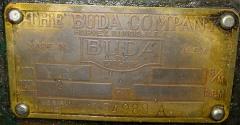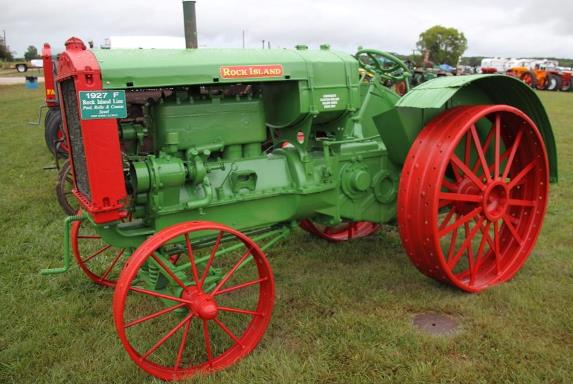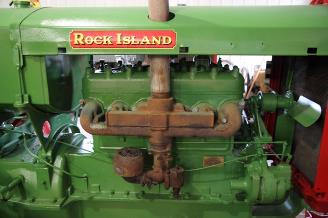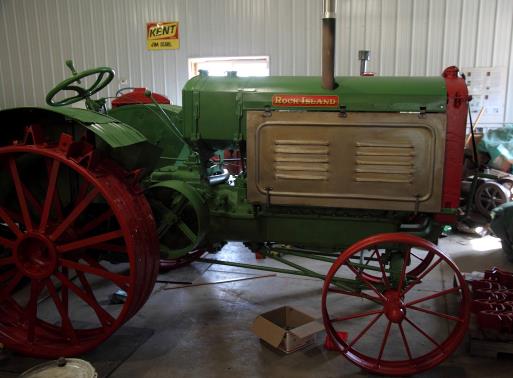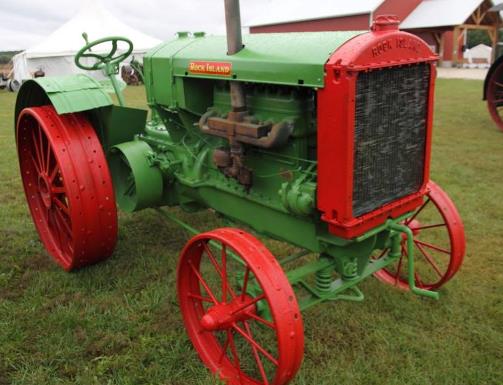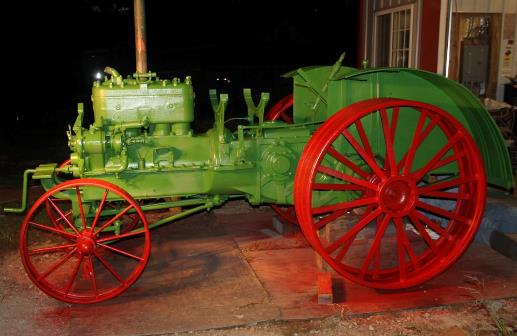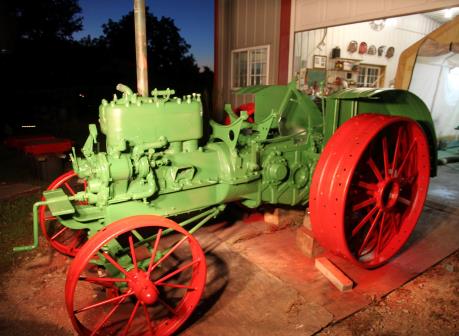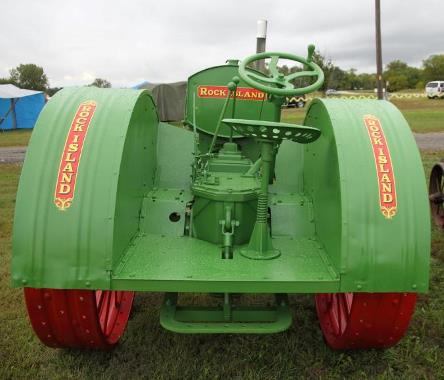






Tractor Summary |
|
· Weight: 4700 · Engine: Buda YR 4 1/2 x 6 · Mag: Dixie 46C · Carb: Stromberg M3 · Serial numbers: 270xxx
|
|
1927 F |
|
This section is as much a case study of a specific tractor as it is general information about the 1927. The earliest advertising only made mention of the 18-35, later the 18-35 and 15-25, it wasn’t until mid to late 1927 that the F and G designations appeared.
The Model F went through a few revisions in its nearly decade long run, but the first one occurred very early in the production run. Its hard to say exactly where things did change, but it appears that serial #270251 was the first significant serial number break for major changes, although a few more minor changes occurred much earlier at #270042. However, these are only serial breaks identified in the F parts list and there were additional ones that went unrecorded later in production.
Through the parts list and advertisements, it is now clear that a few key details stick out about the very early F’s.
1. The fenders on a 1927 F are cut off significantly higher then later F’s. One can easily see the difference in photo’s. 270250 is listed as the change in fender design in the parts list. 2. At first what appears to be an artist misconception (Certainly my initial thought) is that the stack for the aircleaner is missing. Initially, I had though this was a mistake, but upon examining early photo’s it was confirmed these early F’s had the air intake tucked behind the engine curtain. This is consistent in early drawings and photo’s. 3. The governor on early F’s lacked external adjustment. 4. A united air cleaner was used instead of a Pomona. This detail is noted in test 144, but does not show up in the ‘29 or ‘38 parts lists. It seems possible that the United was recalled and replaced with a Pomona. 5. Interestingly, the ’29 and ’38 parts lists both show the original hood in diagrams with only an exhaust stack hole and no hole for the air intake stack. This is consistent with illustrations and photos of the 27. 6. The front end on earlier F’s has 1/2 inch flat iron, on later models this was beefed up to 5/8’s inch. 7. Steering column pipe extends down to steering box and sits on a loose flange piece as opposed ot entering the steering box. 8. ‘27 and early ‘28 fenders were riveted instead of rolled 9. Wheel nuts were slightly different 10. Gas tank has sharper corners than later models 11. ‘27 & ’28 used a wire control for throttle and spark advance
Currently, I know of only two remaining F’s claiming a 1927 build date that I have solid information on, plus have data on the 1927 F 270178 that was used for Nebraska Test 144. I have no pictures of 178 currently, so can best guess it remained close to the advertising in configuration. The engine number for 178 is Buda YR 154949.
David Parfitt has three other 27 F’s on his list: 270187, 270341 and 270376, and I have pictures of two others (though I believe one or both are included in David’s list, though I don’t have serial numbers to match) showing the short fenders, one of which also has fender extensions. None show the alternate intake arraignment, and none can be confirmed with the old style governor.
I will focus on the three ‘27’s I do have data on. Tractor number two that claims a 1927 build date is owned by Ben Garnett in England. This tractor is shown in detail in the UK based Tractor magazine March 2005. This article is highly interesting as it shows many details of the tractor. Immediately apparent besides the red paint scheme (discussed in the F and Waterloo sections) is that this tractor has the standard fenders. Thankfully, the engine tag was photographed for the article showing YR 161074. Based on the information in the article and the photo’s, it is fair to say that while this might be a 1927 model (the tractor tag itself is missing) it is not one of the very first models.
Tractor number three is one of our Rock Islands, purchased at the Jerome Cafferty auction spring 2011 and will be the focus of much of this section. Jerome had had this tractor for about thirty years and had not really worked on it he said. He also could give little history to the tractor. At a glance, the first thing to stand out is the green paint, a detail that has baffled us. Second thing to stand out is that this tractor DOES have the cut off fenders, with an extension added on to lengthen them to standard. This looks like it may have been factory, or else very well done from another Rock Island fender. We debated leaving the extensions off, but they are a true part of the tractors history that doesn’t appear in any brochures or parts catalogs. Although the difference without them is striking, there were practical reasons they were puit in place so for now they remain.
After purchasing the tractor, we began to note a few other surprises. One of the first we found was that this tractor was missing the governor entirely, a simple metal plate had replaced the back of the governor housing. Our supposition is that at one time this tractor had a generator on it that was later removed, taking the governor with it. The governor was obviously set up without the external adjustment. A replacement governor and housing back were obtained from a later model and were slightly modified to fit. Like the Garnett tractor, this F is missing its tractor tag, it does however have an engine tag: YR 154989; making this engine only 40 off the Nebraska Test tractor #178. Since it appears Buda used sequential numbers on all its engines, and we have no way of knowing how engines were matched to tractors, its impossible to say for sure how close to #178 this one is in serial number, but certainly it seems likely it was within a few digits, and below serial number 200. There is also the chance it was built even slightly before #178, although we are highly unlikely to ever know.
We also discovered to our dismay that the axle gears on this tractor had been improperly hardened, and use had ground the gears to almost nothing. Again we were able to obtain replacements from a later tractor.
The green paint was not of the correct color, but we have confirmed on a G and two additional F’s original green color (one in the 350 serial range). This one we never found a solid trace of original paint, but a few places were possibilities. We did find lots of red, but we don’t believe it was original to the tractor and was later primer. Original green we now think was a lighter than JD shade. The mix we used we think might have come out a little lighter than planned, but is in the ball park. Pin striping to be determined as currently no literature has come up.
This one also posses the normal style of aircleaner arrangement, but this was likely done as a restoration, not knowing the correct layout as the aircleaner is typically the first thing to go. There is a hole cut in the hood for the stack now, but we have since had it patched and are returning to what we believe is the original style air cleaner, an impeller style like on the heider c 15-27.
This tractor is also in need of a throttle/spark advance control assembly, these were a wire system.
Currently I have a build thread HERE for the restoration of our 27 F. Eventually it will get a web page just for the build log.
Any information is desperately appreciated.
Back to the F section |
|
HP 18 - 35 |

|
Copy write 2011, 2012, 2013 not for republication or sale without express written consent. All images are the property of their respective owners and are not to be reused without their express permission. |
|
Below: Ben Garnett’s early F |
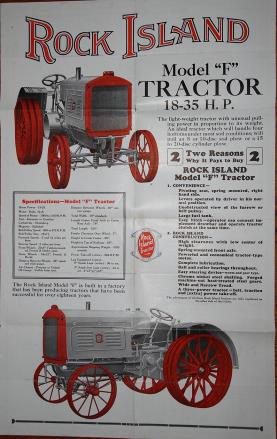
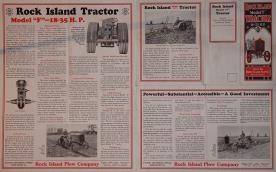
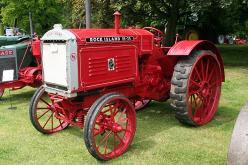
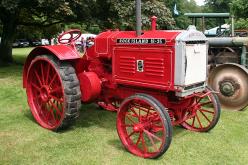
|
Below: Our 1927 F. still working on restoration. Bottom pictures show what a true short fender 18-35 looks like without the extensions. |
